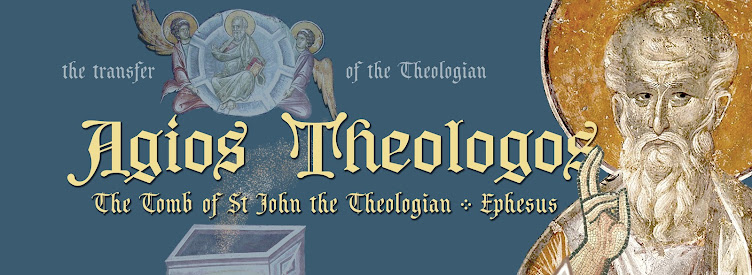The Cave of the Seven Youths of Ephesus
Four kilometers from the Sepulcher Basilica of St John the Theologian lies the cave of the Seven Youths of Ephesus. There, around the year 250 AD, occurred the famous miracle of their 200- year-long slumber and miraculous awakening, through which the Providence of God wanted to convince all of the truth of the resurrection of the dead.
As the Prologue from Ochrid recounts:
“ Seven young men, soldiers, refrained from the impure offering of sacrifices and they earnestly prayed to the one God to save the Christian people. They were the sons of the most influential elders of Ephesus and their names were Maximilian, Jamblichus, Martin [Martinian], John, Dionysius, Exacustodianus, and Antonin [Antoninus]. When they were accused before the emperor, they retreated to a hill outside Ephesus called Celion and there they hid in a cave. When the emperor learned of this, he commanded that the cave be sealed off. However, God according to His far-reaching Providence caused a miraculous and long-lasting sleep to fall upon the young men. The imperial courtiers, Theodore and Rufinus, secret Christians, built in that wall a copper sarcophagus with lead plaques on which were written the names of these young men and their martyr's death during the reign of Emperor Decius. More than two hundred years then passed. During the reign of Emperor Theodosius the Younger (408-450 A.D.), there was a great dispute about the resurrection. There were some that doubted the resurrection. Emperor Theodosius was in great sorrow as a result of this dispute among the faithful and prayed to God that He, in some way, would reveal the truth to men. At that time of turmoil in the Church some sheepherders of Adolius, who owned the hill Celion began to build folds for the sheep and removed stone after stone from that cave. The youths then awakened from their sleep young and healthy, the same as when they fell asleep. The news of this miracle was spread abroad on all sides so that even Theodosius himself came with a great entourage and with delight conversed with the youths. After a week, they again fell into the sleep of death to await the general resurrection. Emperor Theodosius wanted to place their bodies in gold sarcophagi but they appeared to him in a dream and told him to leave them in the earth as they were laid out…”
The Church celebrates their memory on the 4/17th of August.
 |
| Akathist to the Seven Youths of Ephesus at their cave. To the right is the sepulcher of St. Mary Magdalene |
Emperor Theodosius the Younger build a two-story basilica at their cave. The altar of the lower church was exactly where the relics of the Seven Youths were laid. In the cave, as well as all around, are many tombs carved into the rocks, which suggests that this was already a cemetery when the Seven Youths fled and hid here. St. Mary Magdalene was already buried here. It seems as if during the period of Christianity here that this was a blessed place to be buried, next to this holy place of veneration whose miracle confirmed the truth of the resurrection. During the Crusades, the relics of the Holy Seven Youths were taken from the Ephesus cave church to Marseilles, France, with their entire stone sarcophagus. They now are kept at the Abbey of St. Victor in Marseilles.
This miraculous story has a very powerful, almost undeniable proof of its authenticity: a contemporary of that time, St. John Colobus (5th century) who speaks of this occurrence in the life of Venerable Paisius the Great. The Syrian writer, Orthodox bishop of James of Serugh left a record of this event, which was preserved in translation by St. Gregory of Tours (+AD 594). The veneration of the Holy Seven Youths of Ephesus was preserved in the earliest Syrian and Ethiopian diptychs of saints, as well as in old Roman martyrologies. Their story was also known by Mohammed along with many other Arabic writers.
The hymns from the services describe the occurrence thus:
“Your marvelous glory, O Holy Youths, is preached by the cave of Mount Ochlon. Your prayers made fragrant this cave, from which you miraculously appeared, like stars of glory shining from sepulchral darkness, for the strengthening of the church. And so did you teach us to sing to the first ruler of the general resurrection, Christ God, Alleluia! – Akathist to the Seven Youths of Ephesus, Kontakion 6


No comments:
Post a Comment